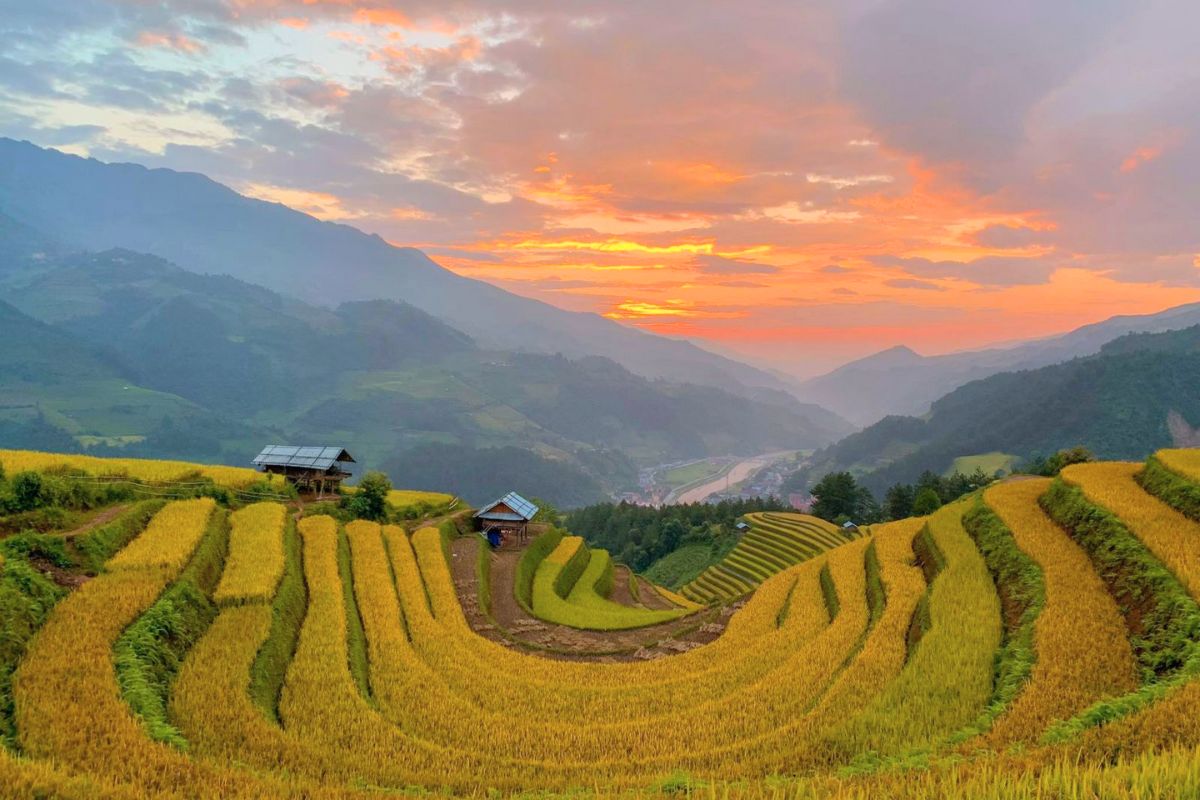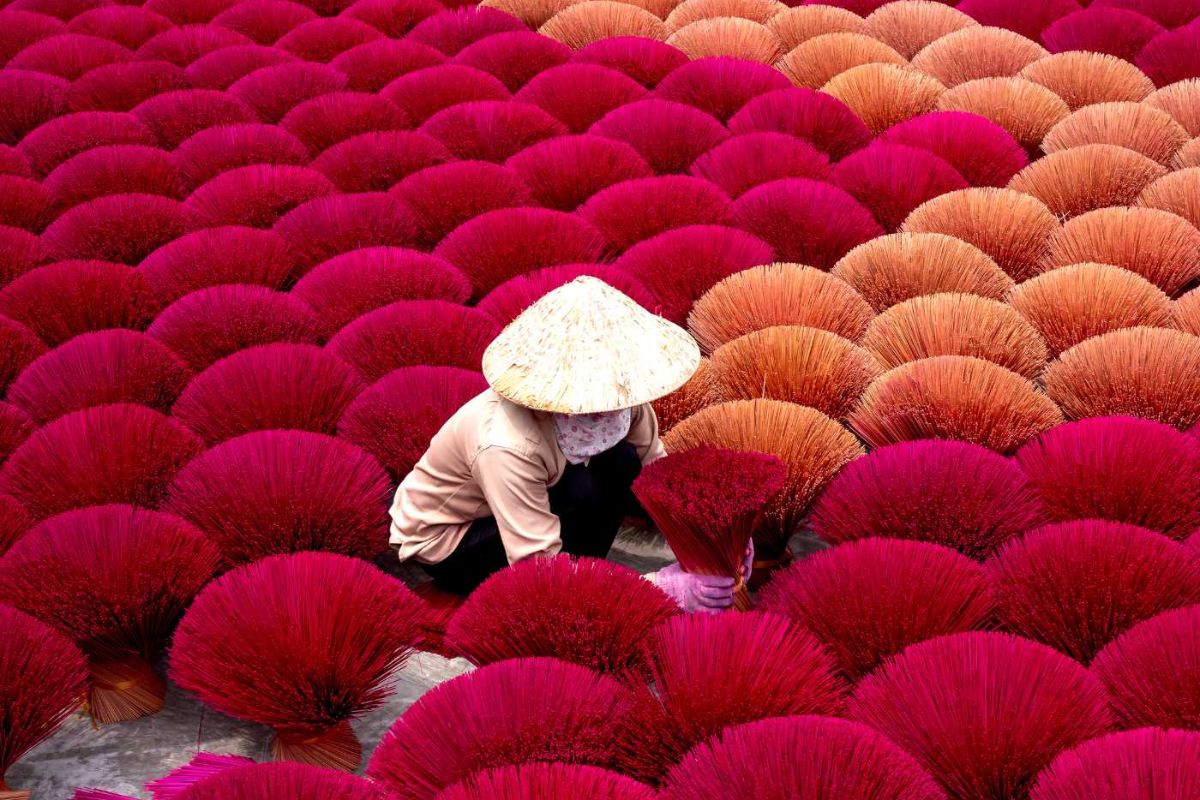TABLE OF CONTENT
- Pho – One of the most famous traditional Vietnamese foods
- Banh mi – A popular Vietnamese sandwich
- Com tam – “Broken rice” dish
- Banh xeo – Crispy savory pancakes
- Bun dau mam tom – Vermicelli with tofu and shrimp paste
- Banh chung, banh tet – Traditional Vietnamese foods during the Lunar New Year
- Thit kho – Caramelized pork and eggs
- Canh chua – Sour soup
- Xoi – Sticky rice
- Che – Sweet dessert soups
Welcome to Vietnam, dear travelers! As you embark on your journey through this beautiful country, you’re about to discover that its culinary landscape is just as rich and diverse as its culture and scenery. Vietnamese cuisine, renowned for its fresh ingredients and complex flavors, offers a delightful adventure for your palate. In this guide, we’ll introduce you to 10 traditional Vietnamese foods that are essential to try during your visit. From north to south, we’ll guide you through must-try bites that’ll have you saying “Wow!” with every mouthful. So loosen that belt, grab your chopsticks, and let’s get this food tour started!
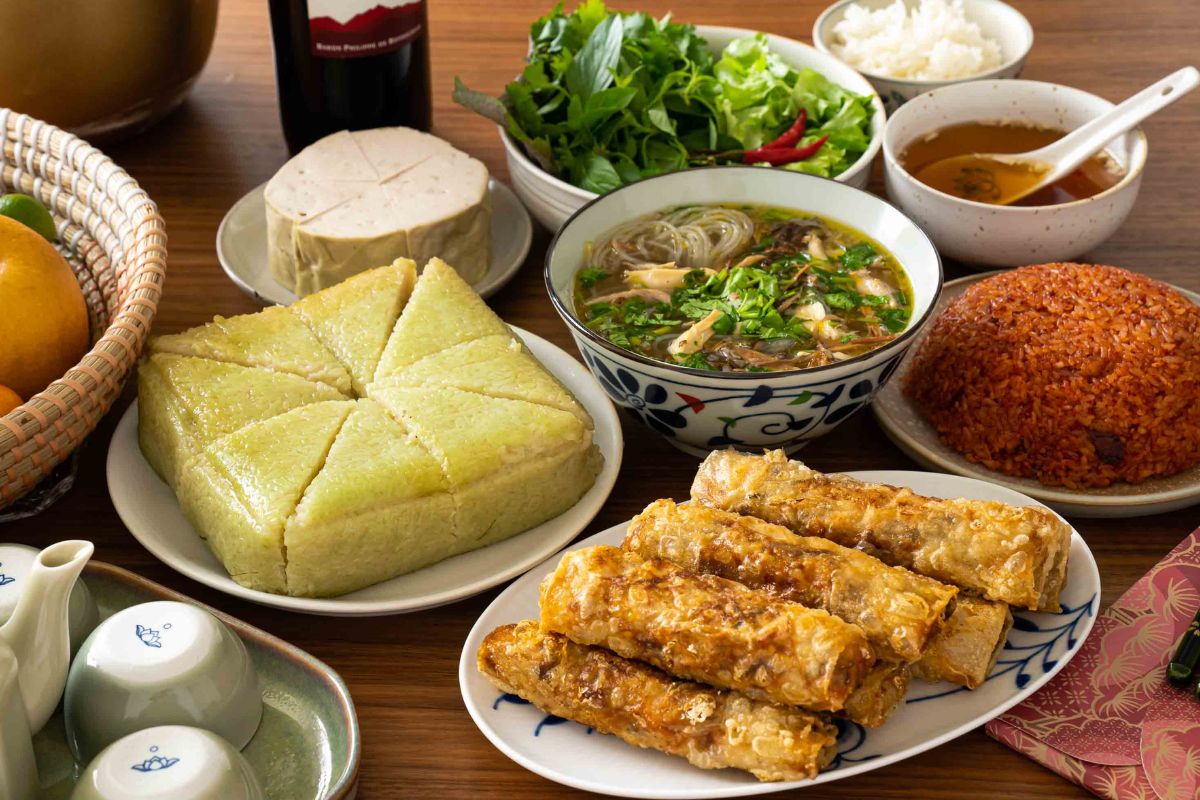
Pho – One of the most famous traditional Vietnamese foods
Among traditional Vietnamese foods, pho is definitely the first dish mentioned, the iconic dish that has captured hearts worldwide. This comforting bowl of pho consists of a clear, flavorful broth made by simmering beef bones and aromatic spices for hours. The broth is then ladled over flat rice noodles and topped with tender slices of beef or chicken. Fresh herbs and vegetables are served alongside each bowl of pho, allowing diners to customize their meal.

The origin of pho can be traced back to the early 20th century in northern Vietnam. Over time, it has evolved and adapted to regional tastes, with slight variations found throughout the country. To truly appreciate this traditional Vietnamese food, head to a local pho shop early in the morning. The aromatic steam rising from the bubbling pots of broth and the sight of locals slurping up noodles is an experience not to be missed.
Banh mi – A popular Vietnamese sandwich
Banh mi is a perfect example of how traditional Vietnamese foods have been influenced by the country’s colonial history. This popular street food is a delicious fusion of French and Vietnamese cuisines, resulting in a sandwich that’s uniquely Vietnamese.
The foundation of banh mi is a crusty French baguette, split lengthwise and filled with a variety of ingredients. Common fillings include pâté, Vietnamese cold cuts, pickled vegetables, cilantro, chili, and a generous spread of mayonnaise. The combination of textures and flavors – crispy bread, savory meats, tangy pickles, and fresh herbs – creates a harmonious balance that keeps people coming back for more.
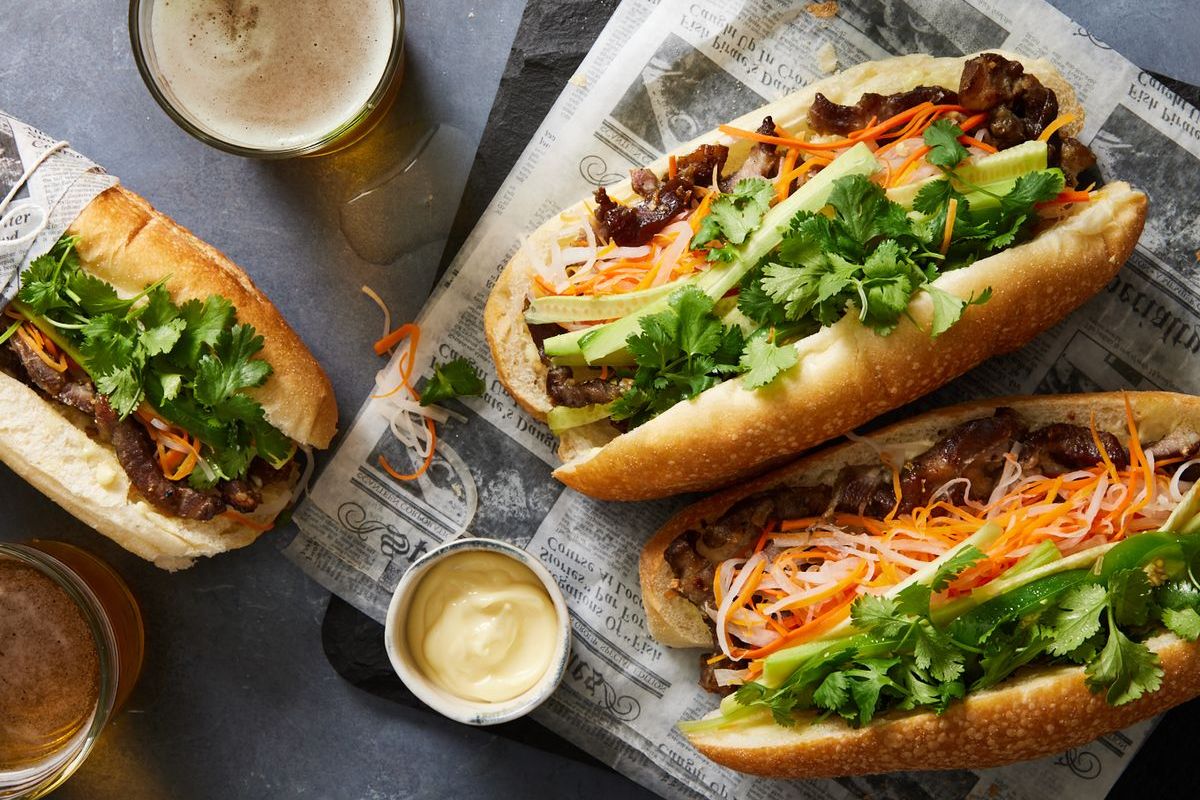
You’ll find countless variations across Vietnam, from classic pork and pâté to vegetarian options filled with tofu or egg. Some modern interpretations even include unconventional ingredients like cheese or ice cream!
Com tam – “Broken rice” dish
Com tam, or “broken rice,” is a humble yet beloved dish that originated in the south of Vietnam. This traditional Vietnamese food has its roots in frugality, as it was originally made with fractured rice grains that were deemed unsuitable for sale. Today, it’s a popular dish enjoyed throughout the country.
The dish typically consists of small, broken rice grains served with a variety of toppings. The most common version, com tam suon nuong, features grilled pork chop, a fried egg, and a slice of steamed egg meatloaf. This is often accompanied by pickled vegetables, cucumber slices, and a small bowl of nuoc cham for dipping.
Com tam is often enjoyed for breakfast or lunch, and you’ll find it served at street-side stalls and local restaurants throughout Vietnam. It’s a filling and affordable option that provides a true taste of traditional Vietnamese foods.
Banh xeo – Crispy savory pancakes
Banh xeo, which translates to “sizzling cake,” is a crispy, savory pancake that’s a favorite among locals and tourists alike. The pancake itself is made from a batter of rice flour, coconut milk, and turmeric, which gives it its distinctive yellow color. The batter is poured into a hot skillet, creating a thin, crispy crepe that’s then filled with a variety of ingredients. Common fillings include pork, shrimp, bean sprouts, and mung beans.
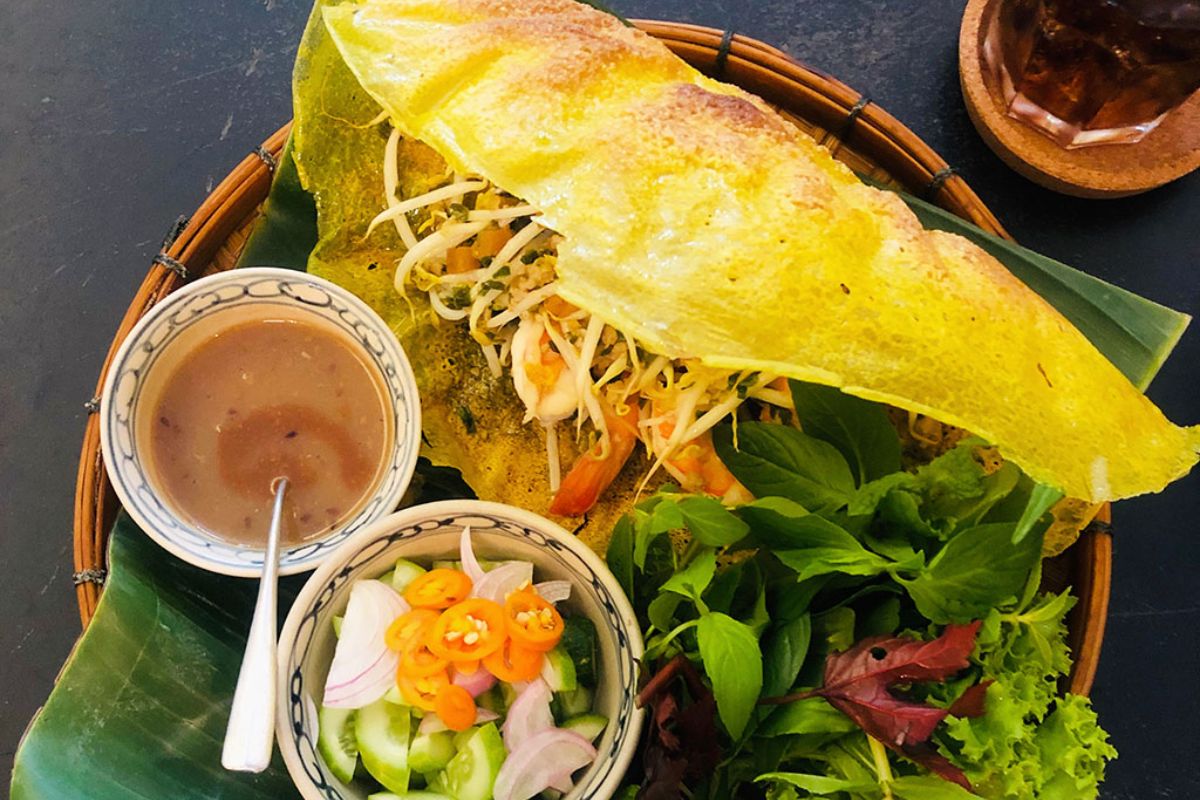
What sets banh xeo apart from other traditional Vietnamese foods is the way it’s eaten. The crispy pancake is typically served with a mountain of fresh herbs and lettuce leaves. Diners tear off a piece of the pancake, wrap it in lettuce along with herbs, and dip it in nuoc cham, a sweet and tangy fish sauce-based dipping sauce.
Bun dau mam tom – Vermicelli with tofu and shrimp paste
Bun dau mam tom is a dish that truly embodies the bold and diverse flavors of traditional Vietnamese foods. This unique combination of ingredients might be challenging for some Western palates, but for those willing to be adventurous, it offers a rewarding culinary experience.
Bun dau mam tom is a dish composed of several key elements. At its core are fresh rice vermicelli noodles (bun), accompanied by crispy fried tofu cubes (dau), and the distinctive fermented shrimp paste sauce (mam tom). This combination is often enhanced with additional accompaniments, such as tender boiled pork and cha com, a unique sausage made with green rice. To round out the meal and add a fresh, crisp contrast, an assortment of herbs and vegetables is typically served alongside.
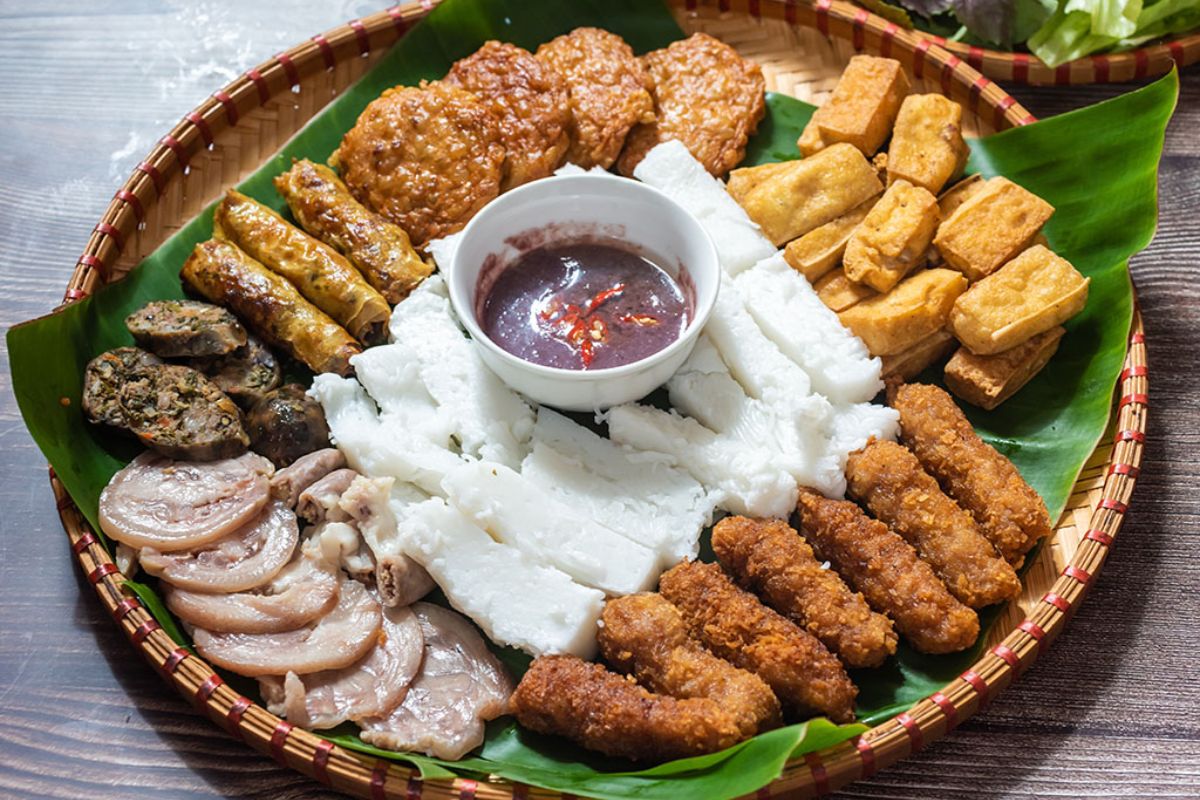
The star of the show is undoubtedly the mam tom, a pungent purple sauce made from fermented shrimp. Its strong aroma and intense flavor are balanced by the mild rice noodles and crispy tofu. The fresh herbs and vegetables provide a refreshing contrast, creating a harmonious blend of flavors and textures.
Banh chung, banh tet – Traditional Vietnamese foods during the Lunar New Year
Banh chung and banh tet are more than just traditional Vietnamese foods; they are an integral part of the country’s cultural heritage, especially during Tet, the Vietnamese Lunar New Year celebration.
Banh chung, originating from the north, is a square-shaped sticky rice cake filled with mung beans and pork, wrapped in dong leaves. Banh tet, its cylindrical southern counterpart, contains similar ingredients but is wrapped in banana leaves.
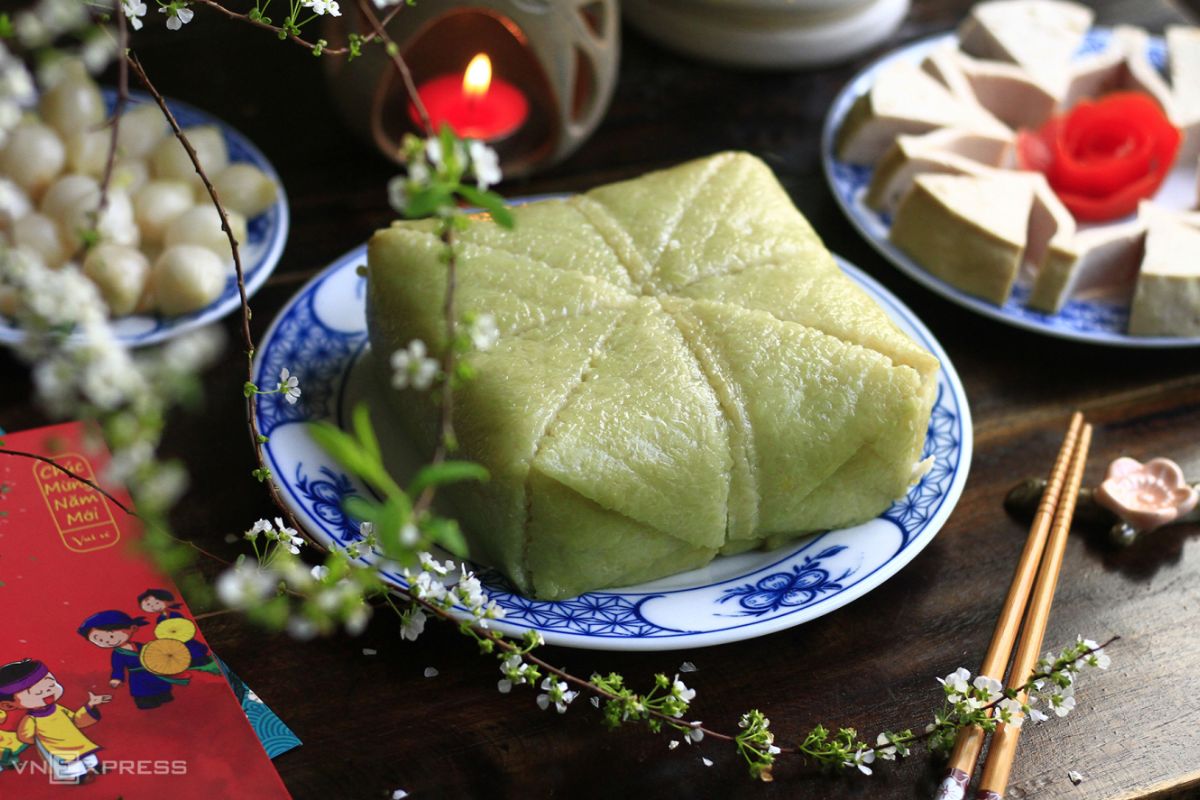
The process of making these cakes is a cherished tradition that brings families together. The preparation is time-consuming, often taking several hours to assemble and many more to cook. The result is a dense, flavorful cake that can be stored for several days, making it perfect for the Tet holiday when cooking is traditionally avoided.
While these traditional Vietnamese foods are most commonly associated with Tet, they can be found year-round in many parts of Vietnam.
Thit kho – Caramelized pork and eggs
Thit kho is a comforting home-style dish that holds a special place in the hearts of many Vietnamese. The dish primarily consists of pork belly and hard-boiled eggs simmered in a mixture of caramelized sugar, fish sauce, and coconut water. The long, slow cooking process allows the pork to become tender and infused with the sweet-savory flavors of the sauce. The eggs, cooked in the same mixture, take on a beautiful brown color and a rich flavor.
Thit kho is typically served with steamed rice, which soaks up the flavorful sauce. It’s often accompanied by dua chua (pickled mustard greens) or other vegetable sides to balance the richness of the dish.
Canh chua – Sour soup
Canh chua is a quintessential traditional Vietnamese food that perfectly embodies the balance of flavors so characteristic of the cuisine. This light yet flavorful soup is particularly popular in the Mekong Delta region of southern Vietnam.
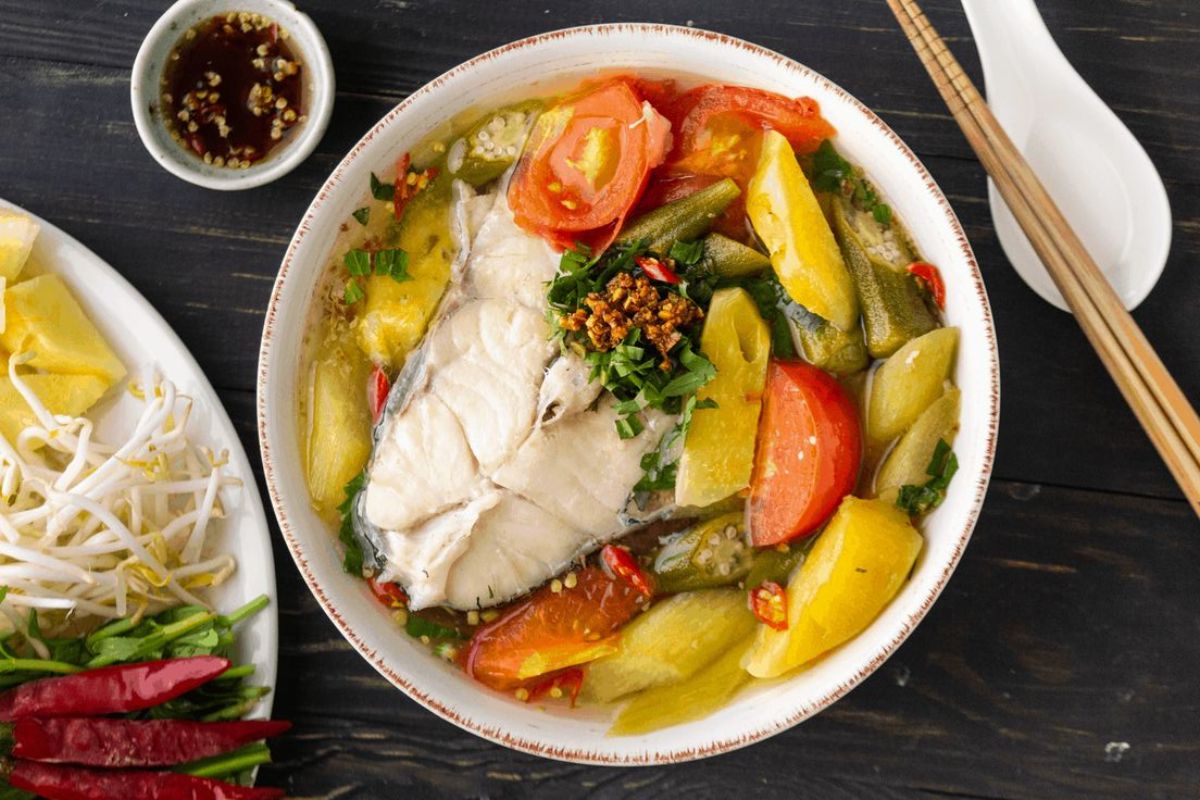
The soup base is made from tamarind, which gives it its signature sour taste. This is balanced with sugar and fish sauce to create a harmonious sweet and sour flavor. The soup is then filled with a variety of ingredients, typically including fish, pineapple, tomatoes, bean sprouts, and okra.
The combination of the tangy broth, tender fish, and crisp vegetables creates a refreshing soup that’s perfect for Vietnam’s hot climate. Canh chua is usually served with steamed rice and can be enjoyed as a light meal on its own or as part of a larger spread.
Xoi – Sticky rice
Xoi is a versatile traditional Vietnamese food that can be enjoyed in both savory and sweet variations. This glutinous rice dish is a popular choice for breakfast or as a snack throughout the day. Savory xoi often includes toppings such as cha lua (Vietnamese pork sausage), ruoc (dried shredded pork), mung bean paste, fried shallots, and quail eggs.
The preparation of xoi involves soaking glutinous rice overnight, then steaming it until it becomes sticky and translucent. The rice is then mixed or topped with various ingredients depending on the specific variety.
Che – Sweet dessert soups
Che, a beloved category of traditional Vietnamese foods, encompasses a variety of sweet dessert soups and puddings. These traditional Vietnamese foods can be served hot or cold and come in countless varieties, each offering a distinctive taste experience. Popular types include che ba mau (three-color dessert), che chuoi (banana che), and che dau xanh (mung bean che).
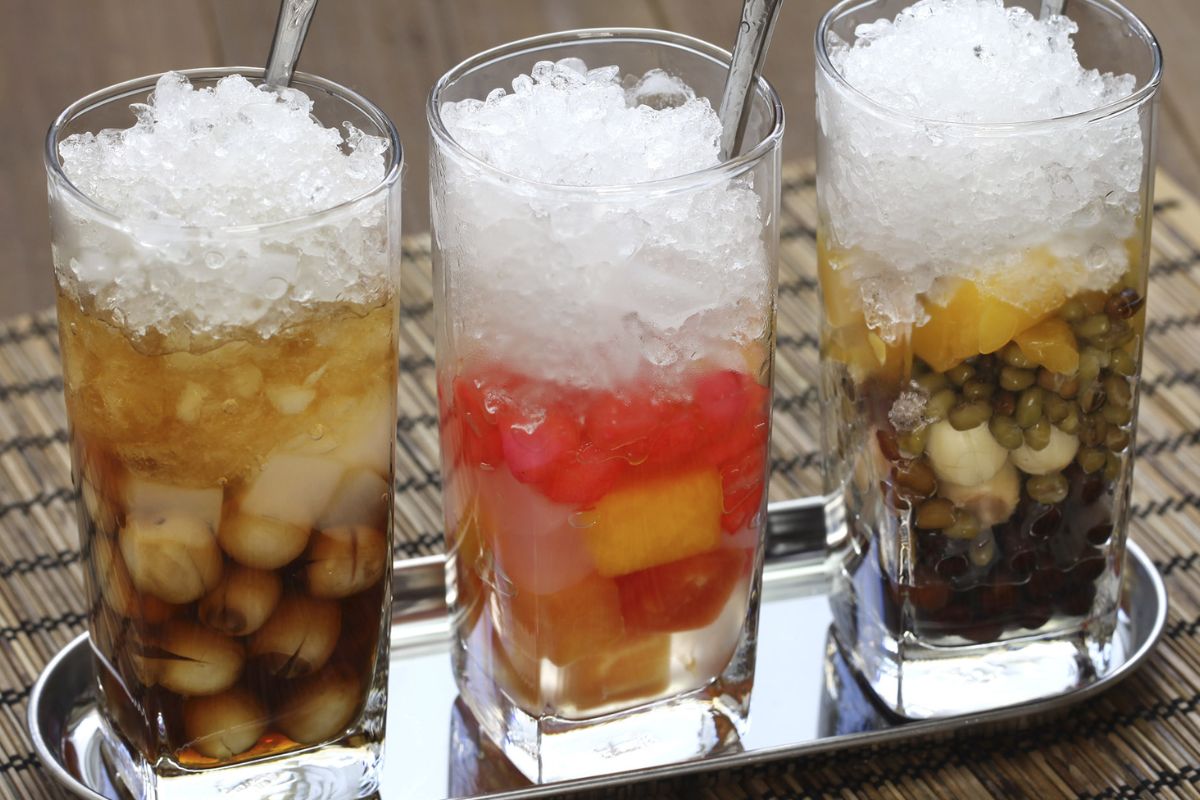
What sets these traditional Vietnamese foods apart is their use of ingredients that might be considered savory in other cuisines, such as beans and glutinous rice. Che is often sold by street vendors, who typically offer several varieties that customers can mix and match. It’s also a popular after-school snack for children and a refreshing treat on hot days.
In conclusion, these ten traditional Vietnamese foods offer just a glimpse into the rich and diverse culinary landscape of Vietnam. Whether you’re planning a trip to Vietnam or simply want to explore Vietnamese cuisine at home, these dishes provide an excellent starting point for your culinary journey.
—
Remember, the best way to experience traditional Vietnamese foods is with an open mind and a hungry stomach. So, grab your chopsticks and embark on a flavorful adventure with Asia Encounter as your guide. From street food tours in Hanoi to cooking classes in Hoi An, we can help you dive deep into the world of Vietnamese cuisine. Enjoy your exploration of Vietnam’s delicious culinary treasures, and let Asia Encounter enhance your gastronomic journey through this fascinating country!


